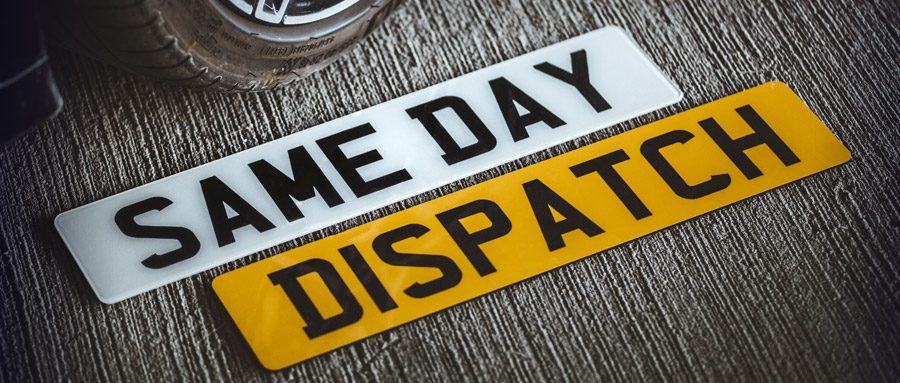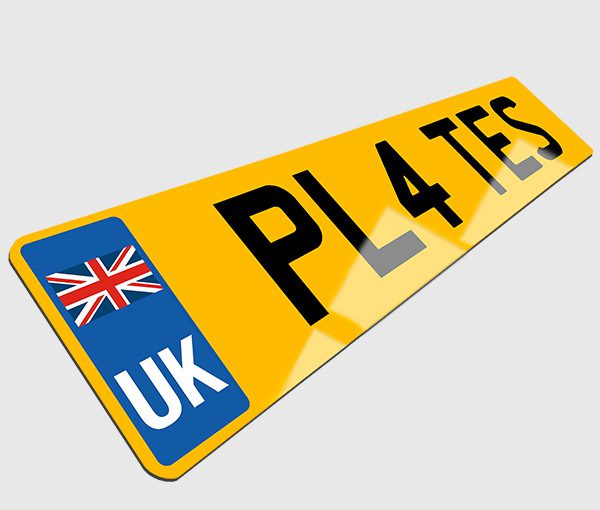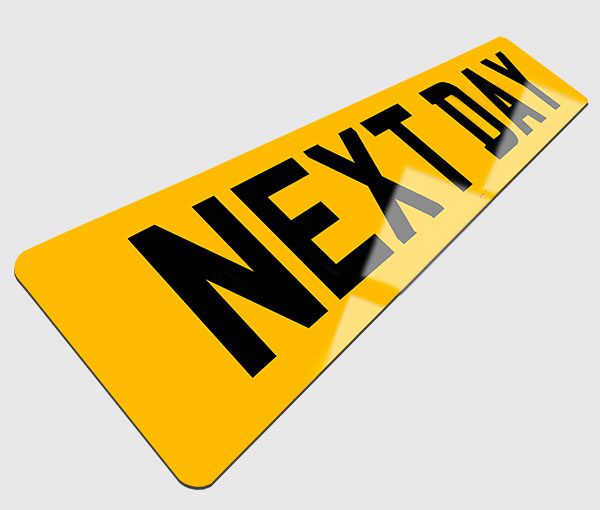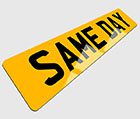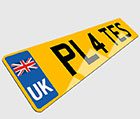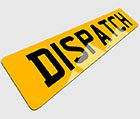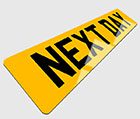Product specs
-
- Universal Fit: Designed to fit all motorcycle models.
- Durable Construction: Weather-resistant materials for long-lasting performance.
- Visibility Boost: Reflective options available for safer night riding.
- Easy to Install: Quick and straightforward mounting process.
- Compliant Designs: Meets legal standards for size, font, and color.
- Personalization: Wide range of styles, fonts, and colors to express your personality.
- Quality Assured: Made with attention to detail for a premium finish.
Custom Motorcycle Number Plates: Stand Out on the Road
Our motorcycle number plate maker allows you to tailor your plate according to your specifications, and we’ll have it dispatched on the same day. At MyReg, we understand the importance of finding plates that work for you and your motorcycle. Using our expertise and knowledge, we can provide plates that tick every box and keep you road legal.
Distinguishing Motorcycle Plates from Car Plates
While car and motorcycle number plates may seem quite similar, they do have their distinct characteristics. The basic structure of the registration is the same, allowing for the transfer of a car number plate onto a motorcycle and vice versa, provided it’s not a one-line plate. Motorcycle number plates are typically spread across two lines, unlike the longer plates commonly seen on standard-issue cars. These motorcycle plates consist of two geographical registration area letters, two numbers serving as the age identifier, and three random letters, with the latter three positioned below the former four on the bottom line.
Sizing Matters in Motorcycle Plates
When it comes to the size of motorbike number plates in the UK, people often debate whether small number plates are too small or not. While there is no definitive answer to this question, it is clear that it must be within legal limits. By ensuring your characters are 64mm high, 44mm wide, with a 10mm stroke, and maintaining a 10mm gap between each character, you are meeting legal requirements. This regulation applies regardless of the overall plate size, except for characters ‘1’ or ‘I,’ which are exceptions to the rule.
Commonly, motorcycle number plates come in the size of 229mm x 178mm (9”x7”), but if you’re looking to make a statement with a larger plate or go for a more compact design, you have the creative freedom to do so. Our sizes start from a pocket-sized 152mm x 102mm (6” x 4”), catering to various needs. However, when selecting a legal plate, we offer the standard 9” x 7” size.
Ensuring Your Motorcycle Plates Are Road-Legal
To maintain the legality of your motorcycle number plate, regular maintenance is essential. It involves ensuring your plate remains in a roadworthy condition, free from dirt, cracks, marks, or screws that could alter the appearance of the lettering. While motorcycles are only required to have a rear plate, it’s recommended to install one, considering the potential hazards of front plates, often referred to as ‘pedestrian slicers’ in collision scenarios.
For a motorcycle number plate to be road-legal, it should be fully reflective, featuring black lettering in the “Charles Wright 2001” font on a yellow background. If you opt for a front plate, a white background is also permissible. Motorcycle enthusiasts looking to add a touch of sophistication to their bike often choose 3D fonts to enhance the appearance. Additionally, you have the option of a border, with a selection of five colours available, and a badge, which must be a pre-approved flag with no deviations from the standards.
Classic Motorcycle Number Plates in the UK
Classic motorcycle owners have the privilege of displaying distinctive black and silver plates reminiscent of a bygone era. Under UK law, motorcycles older than 40 years fall under the “historic vehicles” class, which exempts them from certain DVLA regulations. These exemptions extend to MOT requirements and vehicle tax, provided there have been no “substantial changes” within the last 30 years that alter the way the vehicle operates.
This exemption is part of an effort to preserve historic vehicles and encourages the use of appropriate number plates that reflect the era in which the motorcycle was manufactured. Vintage-style or retro plates are common among classic motorcycles and blend seamlessly with the bike’s overall aesthetic. Furthermore, owners of such historic vehicles often enjoy an exemption from London’s ultra-low and low emissions zones (ULEZ and LEZ), saving them from substantial fees.
A Glimpse into the History of Motorcycle Number Plates
The history of motorcycle number plates in the UK is a fascinating journey. Dating back to the 1903 Motor Act, just five years after Triumph Motorcycles began manufacturing motorbikes in England, number plates lacked dates until the introduction of the 1920 Roads Act. During this period, separate registers existed for cars and motorbikes, leading to identical number plates in the same areas.
In 1963, a significant transformation occurred with the introduction of dates on number plates and the centralisation of all registrations. The year 1984 marked another milestone when the format began to resemble what we see today, with a letter denoting the year of registration (e.g., ‘A’ for 1984) and an area code. The modern regulations we abide by today were introduced in 2001, marking the beginning of a new era for motorcycle number plates.
Motorcycle number plates are more than just identifiers; they are unique and they give your bike its own personality. If you are looking for new motorcycle number plates, MyReg has all that you need, and we deliver our plates rapidly, giving you the opportunity to transform the look of your motorcycle in no time at all.


